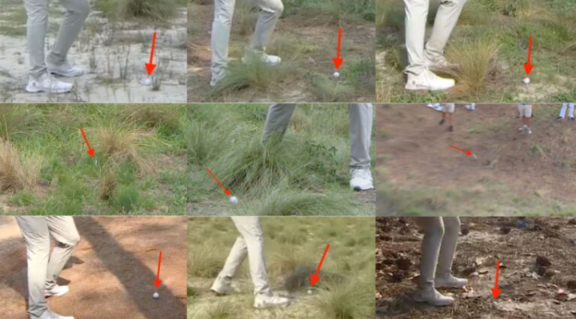In the final round of the U.S. Open, Bryson DeChambeau found only 5 of 13 fairways, equating to a 38.5% success rate. This was significantly lower than both the tournament average of 67.3% and DeChambeau’s own 51.9% average from the first three rounds. Despite this, DeChambeau managed to edge out Rory McIlroy by one stroke at Pinehurst No. 2, claiming his second U.S. Open title.
Pinehurst’s unique challenge comes from its fairways being bordered by sandy native areas filled with Eastern prickly pear, pineweed, and wiregrass, rather than the traditional thick rough. Players never knew what kind of lie they would face after missing a fairway, ranging from open spaces to tricky spots nestled in the vegetation. This unpredictability, which Donald Ross, the course designer, termed “the perfect rough,” added an extra layer of difficulty.
NBC’s coverage highlighted how DeChambeau seemed to benefit from favorable lies in the native areas. Analyst Brandel Chamblee remarked on DeChambeau’s apparent “good fortune,” suggesting he was “kissed by fate.” While luck often plays a part in major wins, DeChambeau argued on the Pat McAfee Show that his lies in the native areas were mostly challenging, with roots and branches complicating his shots.
Without statistics on native-area lies, it’s hard to compare DeChambeau’s luck with other players. However, it’s clear that missing fairways didn’t give him easy second shots. DeChambeau hit only one green in regulation from the native areas, on the 14th hole, and relied on his scrambling skills to secure victory.
Eric Alpenfels, director of the Pinehurst Golf Academy, reviewed DeChambeau’s off-the-fairway shots in the final round:
– **Hole 2, Par 4, 506 yards**: DeChambeau’s lie wasn’t obstructed, giving him a slight break.
– **Hole 5, Par 5, 587 yards**: A difficult, gnarly lie.
– **Hole 8, Par 4, 513 yards**: A far-right miss landed on hardpan, with no real issues.
– **Hole 10, Par 5, 619 yards**: Wiregrass impacted his stance but not significantly.
– **Hole 11, Par 4, 491 yards**: Similar stance issues as on hole 10.
– **Hole 12, Par 4, 478 yards**: DeChambeau advanced the ball only 76 yards due to a tough lie.
– **Hole 14, Par 4, 483 yards**: No significant issues, though a slight difference could have been problematic.
– **Hole 18, Par 4, 449 yards**: His most challenging lie, against a root with overhanging branches restricting his swing.
Overall, Alpenfels noted some favorable lies for DeChambeau but pointed out that his luckiest moment came on the par-4 16th. Despite a leftward drive, a fortunate bounce kept his ball in play, allowing him to make a crucial par. DeChambeau’s skill shone through on the 72nd hole, where he executed a difficult 55-yard bunker shot, showcasing his exceptional ability under pressure.
In conclusion, while DeChambeau may have had a few strokes of luck, his victory was largely due to his resilience and skill in handling Pinehurst’s demanding course.
